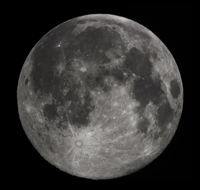Difference between revisions of "Moon"
(→Key Stage 3) |
|||
| Line 114: | Line 114: | ||
|[[File:Ganymede.png|center|150px]] | |[[File:Ganymede.png|center|150px]] | ||
|} | |} | ||
| + | |||
| + | ===References=== | ||
| + | ====AQA==== | ||
| + | |||
| + | :[https://www.amazon.co.uk/gp/product/1471851370/ref=as_li_tl?ie=UTF8&camp=1634&creative=6738&creativeASIN=1471851370&linkCode=as2&tag=nrjc-21&linkId=01c69b0ae058f809cf636033e6ba793e ''Moon, orbit of, page 250, GCSE Physics, Hodder, AQA ''] | ||
| + | :[https://www.amazon.co.uk/gp/product/019835939X/ref=as_li_tl?ie=UTF8&camp=1634&creative=6738&creativeASIN=019835939X&linkCode=as2&tag=nrjc-21&linkId=57e96876985fc39b1a3d8a3e3dc238b6 ''Moon, page 11, GCSE Physics; Third Edition, Oxford University Press, AQA ''] | ||
| + | :[https://www.amazon.co.uk/gp/product/0008158770/ref=as_li_tl?ie=UTF8&camp=1634&creative=6738&creativeASIN=0008158770&linkCode=as2&tag=nrjc-21&linkId=ec31595e720e1529e49876c3866fff6e ''Moon, pages 278-9, 290, 292, GCSE Physics; Student Book, Collins, AQA ''] | ||
| + | :[https://www.amazon.co.uk/gp/product/178294558X/ref=as_li_tl?ie=UTF8&camp=1634&creative=6738&creativeASIN=178294558X&linkCode=as2&tag=nrjc-21&linkId=f0dfb66dafcb0c6e9449e7b1a4ae1ac319 ''Moons, page 101, GCSE Physics; The Revision Guide, CGP, AQA ''] | ||
| + | :[https://www.amazon.co.uk/gp/product/1471851370/ref=as_li_tl?ie=UTF8&camp=1634&creative=6738&creativeASIN=1471851370&linkCode=as2&tag=nrjc-21&linkId=01c69b0ae058f809cf636033e6ba793e ''Moons, page 249, GCSE Physics, Hodder, AQA ''] | ||
| + | :[https://www.amazon.co.uk/gp/product/1782945970/ref=as_li_tl?ie=UTF8&camp=1634&creative=6738&creativeASIN=1782945970&linkCode=as2&tag=nrjc-21&linkId=a120d24dcc7cc7a58192069a3aafc1d2 ''Moons, page 320, GCSE Physics; The Complete 9-1 Course for AQA, CGP, AQA ''] | ||
| + | :[https://www.amazon.co.uk/gp/product/0008158770/ref=as_li_tl?ie=UTF8&camp=1634&creative=6738&creativeASIN=0008158770&linkCode=as2&tag=nrjc-21&linkId=ec31595e720e1529e49876c3866fff6e ''Moons, pages 275, 277, GCSE Physics; Student Book, Collins, AQA ''] | ||
Revision as of 09:58, 9 November 2019
Contents
Key Stage 2
Meaning
A moon is a large rock which orbits a planet.
About Moons
- If it goes around a planet and it was not made by humans then it is called a moon.
- The Earth has one moon called The Moon.
- Some planets have no moons like Mercury and Venus.
- Some planets have many moons. Jupiter has 67 moons.
Examples
| Phobos | Deimos |
| Io | Europa | Callisto | Ganymede |
Key Stage 3
Meaning
A moon is a large rock which orbits a planet.
About Moons
- Moons are natural satellites orbiting a planet.
- Most moons are too small to have enough gravity to become round. They can be asteroids that were captured into orbit by a planets gravity.
- Mercury and Venus do not have any moons. All other planets have one or more moons.
| Phobos | Deimos |
| Io | Europa | Callisto | Ganymede |
Key Stage 4
Meaning
A moon is a large rock which orbits a planet.
About Moons
- Moons are natural satellites orbiting a planet.
- Most moons are too small to have enough gravity to become round. They can be asteroids that were captured into orbit by a planets gravity.
- Mercury and Venus do not have any moons. All other planets have one or more moons.
| Phobos | Deimos |
| Io | Europa | Callisto | Ganymede |
References
AQA
- Moon, orbit of, page 250, GCSE Physics, Hodder, AQA
- Moon, page 11, GCSE Physics; Third Edition, Oxford University Press, AQA
- Moon, pages 278-9, 290, 292, GCSE Physics; Student Book, Collins, AQA
- Moons, page 101, GCSE Physics; The Revision Guide, CGP, AQA
- Moons, page 249, GCSE Physics, Hodder, AQA
- Moons, page 320, GCSE Physics; The Complete 9-1 Course for AQA, CGP, AQA
- Moons, pages 275, 277, GCSE Physics; Student Book, Collins, AQA






